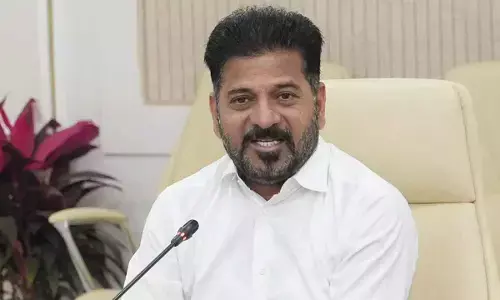‘Luck by chance?’

September 3rd, 1928 Alexander sighed as he looked at the date on the calendar It had been quite a good vacation And he had definitely earned the monthlong break But he had been away far too long from his work
September 3rd, 1928. Alexander sighed as he looked at the date on the calendar. It had been quite a good vacation. And he had definitely earned the month-long break. But he had been away far too long from his work.
He looked at the glass plates in which he had been “growing” bacteria, called ‘cultures’; they were all stacked in a corner untidily. Alexander Fleming was a famous Professor of bacteriology, but he wasn’t particularly neat or orderly. He picked up the plates, one by one, wondering which ones to keep and which ones to throw. It looked like he would have to start all over again to know the exact characteristics of the bacterium called ‘Staphylococcus’. He picked up one of the last ones to find a mould growing right in the middle of the plate. Contamination.. What a pity! He had probably been careless enough to not seal the lid properly.
He was just about to toss it aside when he chanced a second glance at it. “Hmm”, he remarked. “That’s funny!” Alexander had just noticed how the mould— or fungus— was growing in a clear area, with no bacterial “colonies” anywhere around it. The bacteria around the fungus had been destroyed. But the bacterial colonies growing further away were growing normally. Alexander stared at it for some time. THIS definitely wasn’t what his research project was all about. He was supposed to study the properties of a bacterium called “Staphylococcus” and not what apparently destroyed it.
Alexander lost no time in sending a message to his former research assistant, Merlin. “What do you think of it, Merlin?” asked Alexander, when Merlin showed up. “This wasn’t what I had planned to do at all!” Merlin Price looked at the plate of mould thoughtfully. “What if here lies the answer to humanity’s suffering?” he asked. “Everyone’s dying from “blood poisoning”, from their wounds.You’re the one who’s been asking doctors not to use antiseptics for the wounded. Asking them to stop it is fine, but what about an alternative? Do you have one in hand?”
That was just a decade after World War I. Many soldiers had died in the war, not because of their enemy killing them, but after days of suffering, because of their wounds turning septic. Their wounds were often prone to bacterial infection, and they would then turn septic, that worsened the injuries, eventually leading to their death. In those days, doctors used antiseptics to clean and dress the wound, but inspite of that, many soldiers died. Alexander had tried explaining that using antiseptics did more harm than good. How was that possible? Antiseptic medicines definitely worked on the wound surfaces, but there were several bacteria hiding in the deep wounds, that did not need oxygen to survive.
Whenever an antiseptic was used, it would also destroy the healing agents in the body that could tackle the bacteria in the deeper wounds. Unfortunately, doctors continued to do the same. “I just found this out by chance”, murmured Alexander. “I had almost missed it.” “What if it wasn’t by chance?” asked Merlin. “What if the plate had gone into the hands of a young, inexperienced research assistant who would have immediately cleared it away, without even showing it to you? If you noticed it Alex, it’s not just luck— it’s your ability to find the opportunity in failure, to notice what might seem obscure or common place to others. Do you remember how you discovered Lysozyme? Wasn’t it a similar experience?”
Alexander was already well-known for his discovery of Lysozyme, an enzyme that was naturally produced in the human body in the saliva, tears and mucus, and had anti-bacterial properties. But that was not very effective against bacteria, and large quantities of it could not be produced. Alexander seemed to realize what Merlin was saying. “Alright, I’ll try to find out more about this mould”, he agreed. “The Staphylococci can be shelved for some time!” “That’s the spirit”, cried Merlin in exhilaration. “Just think of all the lives we could save!”
Alexander worked hard on his chance discovery. He had to purify whatever it was that was being produced by the mould, so that it could be manufactured in larger quantities so that it could be used as “actual” medicine. He called it “Mould Juice” for quite some time, but later, he realized that the fungus belonged to the genus Penicillium (a name for a specific group of fungi). Then he named his mystery compound as “Penicillin”— and thus was born the world’s first antibiotic. Little did he know that his discovery had been a landmark one, and a Nobel Prize was coming his way.
Alexander tested the effect on penicillin on various bacteria causing some of the most deadly diseases of the day. And wonder of wonders! Like Merlin had predicted, here was penicillin, successfully vanquishing the dreaded agents of Scarlet fever, Pneumonia, Meningitis and Diphtheria. But try as he might, he simply couldn’t purify penicillin to a pure, unadulterated sample that could be tried on humans. He tried hard to isolate penicillin, but his results were never perfect. And then he couldn’t produce enough quantity of penicillin for it to be effective enough. He started feeling that penicillin was far too slow-acting to be an effective killing agent of bacteria, and that it would be of no use in treating infections. Sadly, at long last, he gave up.
But fortunately, a team of Oxford scholars- Ernst Chain, Howard Florey, Edward Abraham and Norman Heatley— took up the job of purifying penicillin and studying its molecular structure. And they got their chance to test out their refined antibiotic just as World War II broke out. Opportunity knocked in the guise of a police constable – surprisingly, also named Alexander— who had suffered a wound during a German bombing raid in Southampton. The man, Albert Alexander, had been fatally wounded, because his wound had already turned septic and the sepsis had spread to his eyes and scalp.
Albert’s case was so particularly heart-rending that a horrified Chain and Florey immediately requested his doctors if they could have a last chance at saving the man by giving him Penicillin. Over the next five days, they gave Alexander 300mg penicillin doses through injections every three hours. As the antibiotic was then not in the completely purified form that we see today, such large doses were necessary. To Florey’s and Chain’s delight, they found marks of improvement in Alexander! But sadly, they didn’t have enough purified penicillin to continue giving him doses. Sadly, Albert Alexander died, but not before proving to the world that Penicillin did work in curing bacterial diseases.
The mass production of the wonder drug, penicillin was soon taken up by pharmaceutical companies, thus giving respite to hundreds and thousands all over the world. Eventually more and more antibiotics were discovered. But it all started with a researcher just happening to take a second glance at what he first thought was a failure.




















